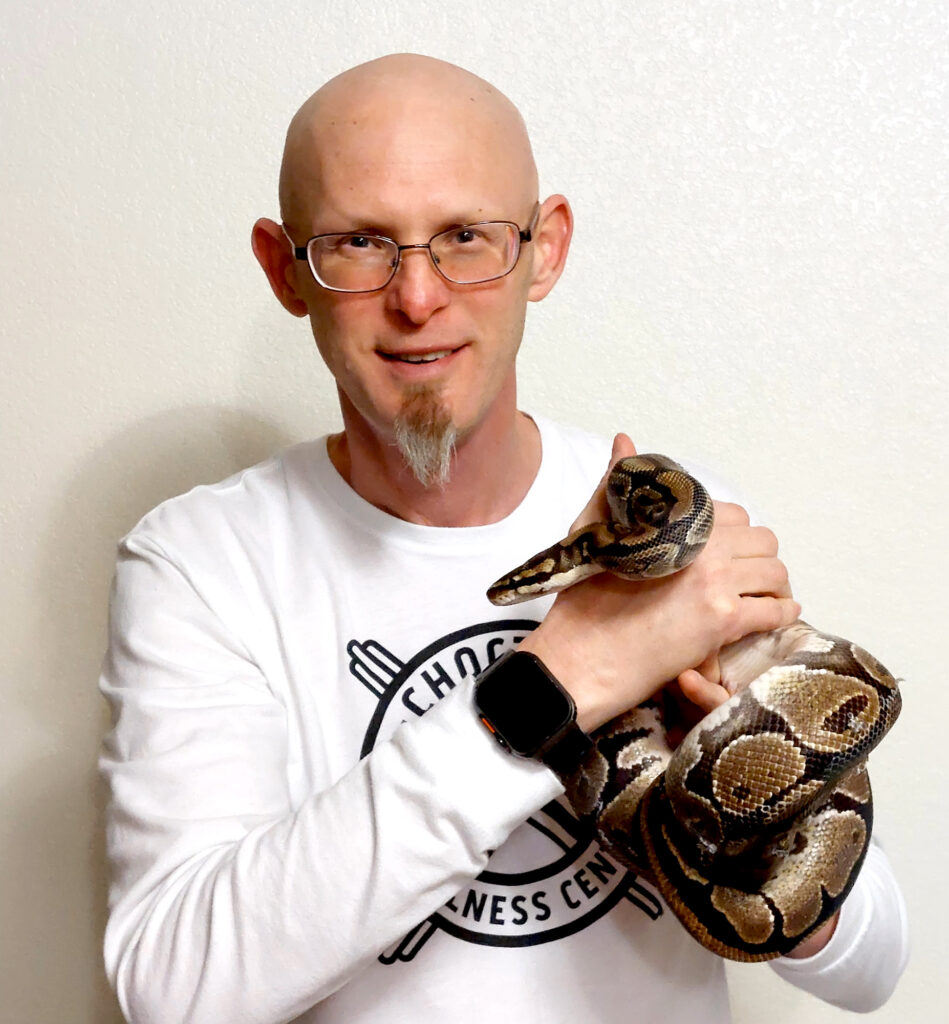
Snakes often bring to mind a feeling of dread or fear to many people. And I have heard more often than not, “The only good snake is a dead snake.” Many don’t know, my patients included, that before I became a physician in the Resident Clinic, I was a university professor and behavioral ecologist who studied the defensive behavior of rattlesnakes.
I feel I can combine my earlier passion for rattlesnakes and my new passion for medicine for the betterment of both snakes and my patients.
In this article, I would like to attempt to make you stop and think about your attitudes toward snakes, particularly rattlesnakes. The Choctaw word for rattlesnake is Sintullo.
According to what I have read and my limited knowledge and understanding of the Choctaw language, it is derived from two words, sinta and hullo. Sinta is the Choctaw word for snake. Hullo means “sacred, supernatural, or awe.”
The Choctaw word for rattlesnake then means the “sacred snake” or” the snake to be held in awe.” Many of the Indigenous peoples originating from the SE US, including the Cherokee, Chickasaw, and Muscogee, avoided killing rattlesnakes because they believed it would bring them misfortune.
It is likely the Choctaw held similar beliefs about the “sacred snake.”
Rattlesnakes, and all snakes in general, are medically important because they serve as an important check on certain pests that spread diseases that directly infect humans and because their venom contains several important chemicals that aid in the development of medications. Rattlesnakes eat primarily small mammals, mostly mice and rats. Mice and rats harbor fleas that can spread the bubonic plague directly to humans. Similarly, deer mice are the reservoir for the bacteria that causes Lyme Disease. Small mammals also serve as hosts that Rocky Mountain spotted fever and perhaps STARI (Southern Tick-Associated Rash Illness). Considering one mouse produces six offspring within 28 days of birth and can have four litters a year, each mouse produces 24 babies. If a rattlesnake eats two mice a month for 6 months, this prevents the birth of 288 mice (24 x 12) each year (and that does not count the babies their babies would have). That is the elimination of a lot of mice each year that could be spreading harmful diseases to people.
Rattlesnake venom is an adaptation for capturing food and is comprised of several dozen different chemicals that affect blood cells, blood vessels, nerves, and muscle cells. Many of these components are currently being studied for their use as medicines. For example, the drug Eprifibatide is an anti-platelet drug derived from pigmy rattlesnake venom that is used in heart attack patients and those undergoing cardiac catheterization. The venom of the South American rattlesnake is being studied for its antibacterial and antiviral properties. Copperheads are close cousins of rattlesnakes. Their venom has been used to develop the drug Alfimeprase, which is in clinical trials right now to be used to dissolve blood clots in peripheral blood vessels.
I know snakes are not everyone’s cup of tea. However, after reading this article, I hope you will reconsider killing the next snake you see. The Choctaw before us viewed the rattlesnake as a sacred or blessed animal. Given their potential to prevent life-threatening diseases and provide life-saving medicines, perhaps they are more sacred than many of us would have thought.